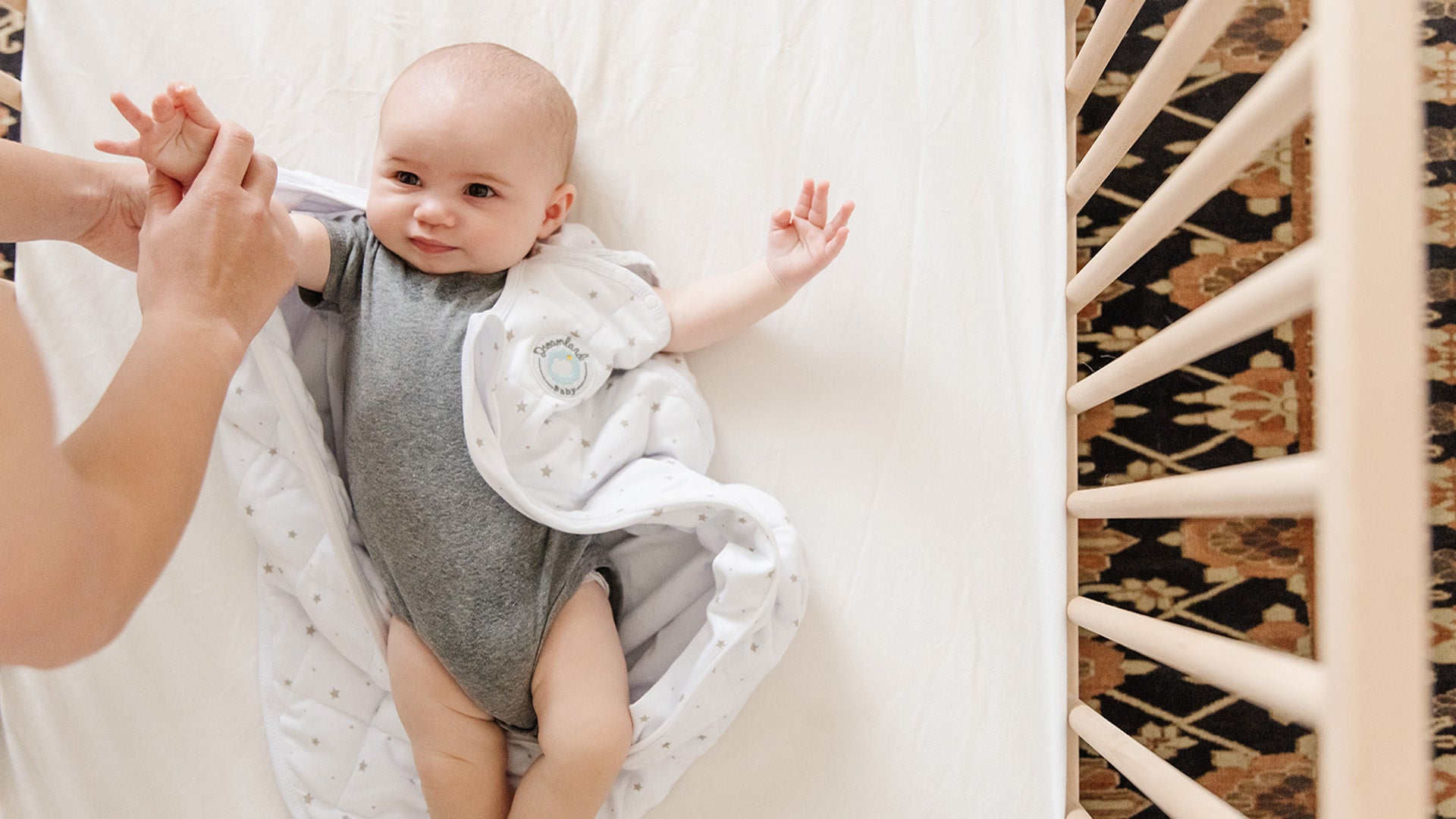Bringing a newborn home, you know, is truly a special time, yet it also comes with a lot of new worries. One of the biggest concerns for many parents, and arguably one of the most talked about, is Sudden Infant Death Syndrome, or SIDS. It's a very scary thought, and it’s natural to want to do everything you possibly can, you know, to keep your little one safe. This deep desire for safety often leads families to explore various technologies, like smart baby monitors, which promise to offer an extra layer of protection, or at least some peace of mind, it seems.
You might find yourself, perhaps in the hospital nursery, talking with your doctor about safe sleep practices and SIDS prevention. This conversation, you know, often sparks a real search for ways to reduce risks at home. It’s quite common for parents to look into every available option, every piece of tech, that might help them feel a bit more secure during those quiet overnight hours. The market, too, offers many devices claiming to assist in this important area, and the Owlet Smart Sock is certainly one that has gained a lot of attention, you know, for its monitoring capabilities.
The Owlet Smart Sock, for instance, claims to keep an eye on your baby's heart rate and blood oxygen levels, offering data that parents might hope could act as an early warning system. But, you know, does this wearable technology truly prevent SIDS? That's the really big question many families are asking. It’s important to learn more about what this device can and cannot do, and to consider its limitations, as a matter of fact, before making decisions about its use for your family's sleep routine.
Table of Contents
- What the Owlet Does: Monitoring Vital Signs
- The Truth About SIDS Prevention: Expert Views
- FDA Approval: What It Means for Owlet
- Peace of Mind Versus Prevention: Understanding the Difference
- Safe Sleep Practices: The Cornerstone of Protection
- Frequently Asked Questions
What the Owlet Does: Monitoring Vital Signs
The Owlet Smart Sock, you know, has become a very popular product. It’s designed to keep track of a baby's vital signs, specifically their heart rate and blood oxygen levels, while they sleep. This kind of monitoring, it seems, can give parents a sense of reassurance, knowing that some data about their baby’s well-being is being collected in real time. The idea is that if these vital signs go outside a set range, the device will alert the parents, perhaps giving them a chance to check on their child.
So, the Owlet itself, as a matter of fact, cannot "prevent" SIDS directly. It’s more about providing extra data that might help parents manage their SIDS risk, or at least feel more informed. Many parents, as I was saying, find that this continuous monitoring offers a lot of reassurance, especially those who might be feeling anxious about their baby’s sleep. It's almost like having an extra set of eyes, or perhaps a digital assistant, watching over your little one during the night.
This device, you know, is marketed as something that can help prevent SIDS, or at least that's how some perceive its purpose. It's truly important to note that while it tracks heart rate and oxygen, its role is not to stop SIDS from happening. Instead, it aims to let parents know if their child, for instance, might be experiencing something like choking or suffocating, which are different situations from SIDS itself, though still very serious concerns, obviously.
The Truth About SIDS Prevention: Expert Views
When we talk about preventing SIDS, it's really important to listen to what medical experts say. The American Academy of Pediatrics (AAP), you know, is a leading authority on child health. In their "Safe Sleep Recommendations," which were updated in 2022, they are very clear on this point. They state that "home cardiorespiratory monitors should not be used to reduce the risk of SIDS." This guidance, you know, is based on a lot of research and data.
The AAP's position, you know, highlights a crucial distinction. While devices like the Owlet provide data, there isn't, you know, sufficient evidence to support their use as a SIDS prevention tool. Parents are being cautioned, as a matter of fact, not to rely on consumer baby monitors for this specific purpose. This warning comes after some popular models, it seems, even scored poorly in certain testing situations, which is quite concerning, frankly.
More than 3,000 babies, you know, die each year from sudden infant unexpected death (SUID), which includes SIDS. This tragic statistic underscores why families are so eager for solutions. However, the medical community, you know, emphasizes that while these monitors might offer peace of mind, they don't replace established safe sleep practices. The data supporting their use to prevent SIDS, you know, just isn't there in the way many hope, unfortunately.
FDA Approval: What It Means for Owlet
Recently, there's been some news that has, you know, really raised hopes for many families. The Owlet's Smart Sock received FDA approval for monitoring infants, which is a significant development, to be honest. This approval means the device has met certain regulatory standards for accuracy and safety in its intended function of monitoring, but it’s important to understand what that approval specifically covers, you know, and what it doesn't.
This FDA approval, you know, is for the device's ability to monitor vital signs, like heart rate and oxygen levels. It does not, however, mean that the Owlet is approved as a device that prevents SIDS. This is a subtle, but very important difference, you know, that parents need to grasp. The approval validates its monitoring capabilities, but not a direct SIDS prevention claim, essentially.
There have been studies, you know, that looked at the results of monitors like the Owlet and Baby Vida, which were designed to warn parents. While these studies are part of the ongoing research, the FDA approval for the Owlet specifically, you know, focuses on its role as a monitor. It gives a kind of official stamp of approval for its function, but it doesn't, you know, change the overall medical guidance about SIDS prevention, which is still primarily about safe sleep environments, obviously.
Peace of Mind Versus Prevention: Understanding the Difference
It’s very clear, you know, that the Owlet sock does not prevent SIDS. This is a point that is often repeated by medical professionals and even by the company's own more precise descriptions. What it may do, however, is provide parents with a sense of peace of mind through its monitoring of vital signs. For many, you know, that reassurance alone can be incredibly valuable, especially during those first few months when anxieties are naturally high, it seems.
The distinction between "prevention" and "peace of mind" is really important, you know. To define the word, when you "do" something, this means you “perform, take part in, or achieve something.” Preventing SIDS would mean actively stopping it from happening, which the Owlet does not claim to do, and which medical bodies state it cannot do. Providing peace of mind, on the other hand, means alleviating worry or anxiety, which is a different kind of benefit, you know, and arguably what most parents experience.
The Owlet Smart Sock is a popular product that has gained attention for its ability to monitor a baby’s vitals and, as I was saying, provide parents with peace of mind. However, it is important to note that the Owlet does not prevent SIDS. Rather, it lets parents know if their child is, for instance, choking or suffocating, which are acute events that require immediate attention. The AAP, you know, warns that parents shouldn't rely on these consumer devices as a substitute for known safe sleep practices, which is a key message, you know, to remember.
Safe Sleep Practices: The Cornerstone of Protection
While technology offers fascinating tools, the most effective ways to reduce the risk of SIDS, you know, remain rooted in established safe sleep practices. These guidelines are recommended by leading health organizations, like the American Academy of Pediatrics, because they are backed by extensive research and have shown to make a real difference. It's truly the cornerstone of protection for your baby, you know, and something every parent should focus on.
So, what do these safe sleep practices involve? Basically, it means always placing your baby on their back to sleep, for every nap and every night. This is, you know, arguably the single most important step. Also, ensure your baby sleeps on a firm, flat surface, like a crib mattress, that is free of loose blankets, pillows, bumper pads, or any soft objects. A bare crib, you know, is a safe crib, as a matter of fact.
Sharing a room with your baby, but not sharing a bed, is also highly recommended, you know, for at least the first six months, and ideally up to a year. This allows you to be close to your baby for feeding and comforting, yet it avoids the risks associated with bed-sharing. Keeping the baby’s sleep area smoke-free and avoiding overheating are other crucial elements, you know, that contribute to a safer sleep environment. These practices, you know, are the most reliable ways to manage SIDS risk, according to experts. Learn more about safe sleep guidelines on our site.
Frequently Asked Questions
Can an Owlet monitor detect SIDS?
No, an Owlet monitor, you know, cannot detect SIDS. SIDS is a diagnosis given after other causes of death have been ruled out, and it happens without warning. The Owlet monitors heart rate and oxygen levels, which might indicate other issues like choking or suffocating, but it does not, you know, directly detect or predict SIDS itself, as a matter of fact.
What do doctors say about the Owlet Smart Sock?
Doctors, especially those affiliated with organizations like the American Academy of Pediatrics (AAP), generally caution parents not to rely on consumer monitors like the Owlet Smart Sock to prevent SIDS. While they acknowledge the device monitors vital signs and can provide peace of mind, they emphasize that there is no scientific evidence, you know, that these devices reduce the risk of SIDS. Their primary recommendation, you know, is always safe sleep practices.
Is the Owlet Smart Sock FDA approved for SIDS prevention?
No, the Owlet Smart Sock is not FDA approved for SIDS prevention. It has received FDA clearance for monitoring a baby's heart rate and oxygen levels, which is a specific function. This approval, you know, validates its accuracy as a monitor, but it does not mean it is approved as a device that prevents SIDS. This distinction, you know, is very important for parents to understand. You can learn more about the FDA's stance on baby monitors and what their approvals mean for consumer products.



Detail Author:
- Name : Ethan Torphy I
- Username : rhianna.hauck
- Email : carrie09@schowalter.com
- Birthdate : 1984-08-03
- Address : 1603 Gutmann Plains South Werner, OK 32150
- Phone : 820-490-4783
- Company : Ledner, Glover and Wuckert
- Job : Web Developer
- Bio : Provident fuga et nam dolores eveniet. Qui saepe voluptas perspiciatis fugiat. Animi libero commodi quia. Eos autem explicabo eaque inventore sapiente minima.
Socials
tiktok:
- url : https://tiktok.com/@weldon_xx
- username : weldon_xx
- bio : Et suscipit aut consequatur magni adipisci.
- followers : 4985
- following : 843
facebook:
- url : https://facebook.com/wwilliamson
- username : wwilliamson
- bio : Rerum facilis dolore inventore mollitia voluptatem.
- followers : 6087
- following : 2638
instagram:
- url : https://instagram.com/weldon_williamson
- username : weldon_williamson
- bio : Quos deleniti dignissimos id excepturi. Eos placeat officiis ad sed.
- followers : 4423
- following : 2789
linkedin:
- url : https://linkedin.com/in/weldon.williamson
- username : weldon.williamson
- bio : Rerum est fugiat ex consectetur ut dignissimos.
- followers : 195
- following : 1801